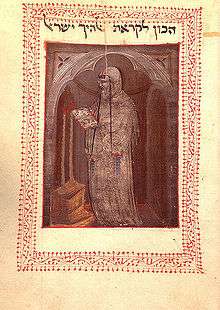Ruach (Kabbalah)

Building on Kabbalah's conception of the soul, Abraham Abulafia's meditations included the "inner illumination of" the human form[1]
The Kabbalah posits that the human soul has three elements, the nefesh, ru'ach, and neshamah. The nefesh is found in all humans, and enters the physical body at birth. It is the source of one's physical and psychological nature. The next two parts of the soul are not implanted at birth, but can be developed over time; their development depends on the actions and beliefs of the individual. They are said to only fully exist in people awakened spiritually. A common way of explaining the three parts of the soul is as follows:
- Nefesh (נפש): the lower part, or "animal part", of the soul. It is linked to instincts and bodily cravings. This part of the soul is provided at birth.
- Ruach (רוח): the middle soul, the "spirit". It contains the moral virtues and the ability to distinguish between good and evil.
- Neshamah (נשמה): the higher soul, or "super-soul". This separates man from all other life-forms. It is related to the intellect and allows man to enjoy and benefit from the afterlife. It allows one to have some awareness of the existence and presence of God.
See also
References
- ↑ (Otzar Eden Ganuz, Oxford Ms. 1580, fols. 163b-164a; see also Hayei Haolam Haba, Oxford 1582, fol. 12a)
This article is issued from
Wikipedia.
The text is licensed under Creative Commons - Attribution - Sharealike.
Additional terms may apply for the media files.